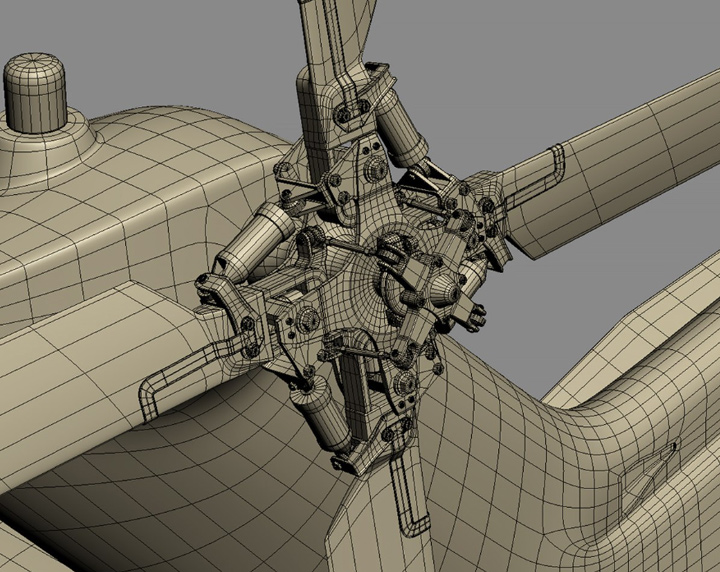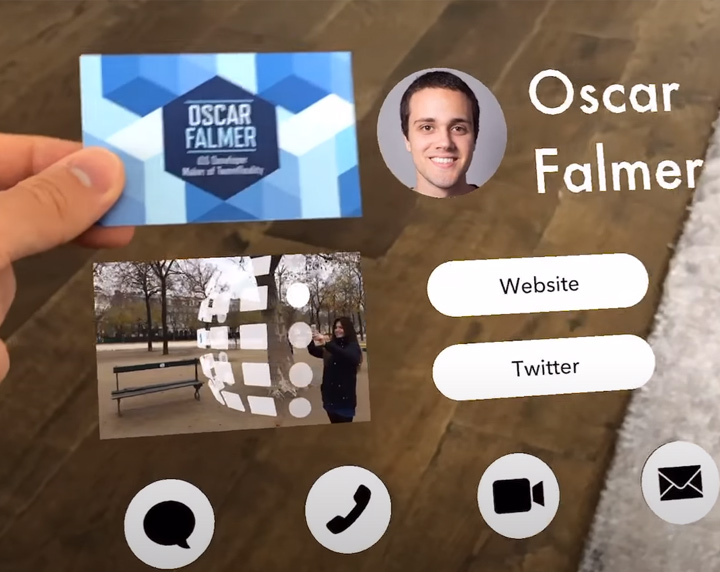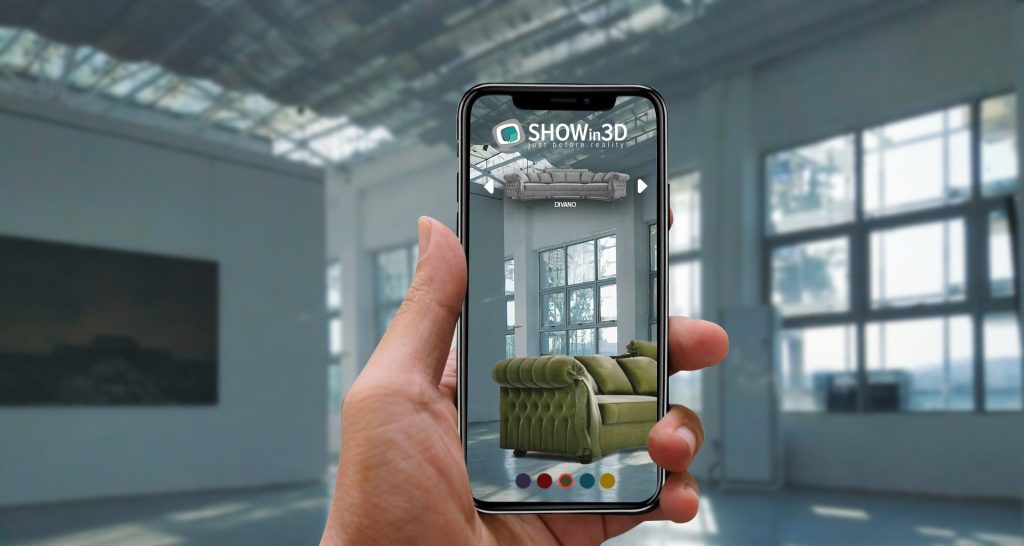From Gaming Technology to Industry What is Mixed Reality of MetaQuest 3? If you frequent Facebook, you have probably come...
- 3D Technology
- Applications
-
Projects
-
-
Fashion - Zegna X Project
Automotive - UP Design Project
- PEI Mobility Project
-
Machinery - Breton Project
Manufacturing - Sipro Project
-
Furniture - Stella Project
-
- The Company
- Blog
- Contacts
AR technology in companies
How does AR Augmented Reality work? For which companies is Augmented Reality with configurable products useful?
Modern companies are increasingly moving toward the use of immersive interactive product experiences. We are talking about the whole world of visual economy tools that are becoming an expectation of customers. Among the most popular tools are product configurators and even more so 3D product configurators combined with augmented reality.
The definitions of configurator, according to Wikipedia, are as follows:
The product configurator (also simply configurator) is a particular software, belonging to the family of variety (product) management support tools, which allows, according to given criteria, to define a product that meets a certain combination of components, features or functions.
Augmented reality (AR) , particularly “mobile AR,” lends itself as an excellent user experience applied to product configuration. Augmented reality is nothing more than the mediation of a computer, smartphone or tablet that merges the existing, for example an empty room, with elaborate elements, a sofa, a chair, etc… It is the flexibility of product choice and configuration, fused with strong emotional involvement.

Mobile AR market size in 2023-2026
Size of the AR advertising market in 2023-2026
AR applications
Numerous footwear and apparel retailers have already successfully adopted online 3D configurators, achieving significant results for their business. For example, a well-known footwear brand reported a 30 percent increase in sales after implementing an online 3D configurator, offering customers the ability to customize shoes to their own tastes.

3D detail

Reality

Reality + virtual product
AR operating principles
There are several ways applications enable AR features. Typically there are two: marker-based tracking and markerless tracking.
Marker-based tracking (marker): this mode requires optical markers, such as QR codes or predefined images, to activate AR features. By pointing the mobile phone camera, the application recognizes them and overlays the digital image on the screen.
Markerless Tracking: This mode is based on object recognition. AR applications that work on the basis of markerless tracking are triggered when they recognize certain real-world situations.
Applications of augmented reality
The applications for AR in the world of marketing are numerous. Not only is it a more interactive means of engaging your customers, but it’s also a faster way to find specific product information. Some examples:
Virtual mannequins in AR
Allowing users to virtually see clothes, although the physical process of trying them on will never be eliminated, certainly reduces the number of garments to be brought into the fitting room and the resulting long times. Even more useful is its use in e-commerce, where the buyer can contextualize the garment in his or her everyday place of living.
Virtual mannequins in AR
Thanks to well-known brands like IKEA, augmented reality furniture and other home uses are becoming increasingly popular. Technology offers customers the opportunity to virtually see the furniture in their homes before making a purchase decision.

Architecture in AR
A project on paper can come to life through AR. Seeing them in a new space with interactive 3D models conveys an even more engaging message. When AR is used in architecture, success is assured


Aeronautics in AR
Thanks to well-known brands like IKEA, augmented reality furniture and other home uses are becoming increasingly popular. Technology offers customers the opportunity to virtually see the furniture in their homes before making a purchase decision.
AR business cards
Handing your business card to a contact is all about first impressions. With augmented reality business cards you can stand out. Furthermore, there are no limits to the contents that would be unthinkable on a piece of paper.

Packaging and AR
Augmented reality can be used to tell a story about your brand. The possibility of making the labels animated is interesting.
Menu
We often have to deal with restaurant menus. In recent years, thanks to the fear of contagion from COVID, QR codes have spread and replaced the paper forms. With AR you can take it to the next level and see what your food looks like before you actually order it.
Museums in AR
An augmented reality exhibition presents museum visitors with broader and more engaging information. Investments in this field are increasingly strong and will revolutionize learning and the attractiveness of museums themselves.
AR books and magazines
There are numerous augmented reality books, particularly for children, that offer virtual content at the top of each page. Everything is very realistic and engaging.

Implementation and integration

To integrate a 3D AR configurator with your platforms, a few key steps are required. It is important to select a reliable 3D configurator provider such as SHIN software and follow the instructions provided for integration with the chosen platform. It is also essential to keep in mind some considerations and challenges, such as image management for 3D models, their optimization for full compatibility with different devices. SHOWin3D is our platform that automates these crucial steps.
Conclusions
The future is increasingly oriented towards the experience of personalization and customer involvement. The 3D online configurators and their AR version represent an innovative solution for those who want to offer a unique and personalized experience. By taking advantage of real-time three-dimensional visualization, personalization and integration with e-commerce platforms, retailers can increase sales and build customer loyalty. There has never been a better time to embrace 3D online configurator technology and redefine the shopping experience, even in augmented reality.
Our AR product configuration solution
Find out more news
Applications of Oculus and VR headsets in Industry
Improve the shopping experience Applications of Oculus and VR headsets in Industry In recent years, Oculus and VR headsets have...
How does AR Augmented Reality work? For which companies is Augmented Reality with configurable products useful?
AR technology in companies How does AR Augmented Reality work? For which companies is Augmented Reality with configurable products useful?...
Increase sales with a 3D product configurator
Technology from games to industry Increase sales with a 3D product configurator Product configurators are revolutionizing the way companies present...




